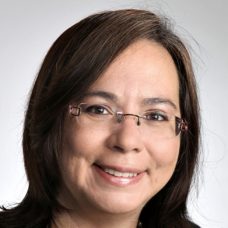Importance of journey in writing funding applications
September is a month when several grant applications are submitted in Finland, consequently many researchers, in Academia and in Industry, inject the needed stamina to deliver a suitable application on time. Often to write a grant application requires an extra effort above the daily work activities and the competition increases each year. In University of Turku, we have access to human resources (e.g. research services or business collaboration units) to support us in our grant application journey. Despite the support available, we know each application requires a considerable amount of work.
What happens after we submit our grant application proposal?
Often after submitting a grant application to a funder, in my case, it is a bitter-sweet moment. On one hand I am happy to successfully achieve the submission deadline. On the other hand, an uneasy feeling emerges because I know the success rate to be funded is low. The typical reflection one hears after someone has submitted a funding application is: we can “re-utilize” the text.
However, after my last submission, which is for a transdisciplinary project of a couple of million euros, the bitter-sweet moment didn’t show up. I am only happy that we reached the milestone: we submitted the application on time. In this particular case we already have a valuable outcome, independently of the decision of the funder, all of us learned something from this journey
What did we learn in our transdisciplinary project proposal ?
The journey of the project submitted in September, which inspires this blog post, started in January 2022. In early phase of the journey I contacted Prof. of Practice, Niko Myller. He accepted to join the project and while working with him I started to see the project preparation through completely different lenses. We reflected together after each meeting. One could say, we had our learning diary as after each meeting we produced minutes. We were listening constantly to the people we interacted with in relationship to the project, from academia and industry, we were connecting ideas, discovering and reflecting. Additionally, we were solving challenges, because we had many, it should be stated.
To team up with someone who has complementary experience and skills since the early phase of the project creation has been an added value in this grant application journey. To have an honest conversation with someone who has more experience in industry and simultaneously has interest to support academic research at UTU has an added value in itself. Extracting from our minutes, our journey also produced the following outcomes:
We learned about a content area that for many of us was unfamiliar, but our different talents, which are complementary, enable us to address a complex problem as a consortium (industry and academia partners) with an inter-disciplinary and transdisciplinary perspective.
We connected with three different departments in UTU, besides ours. The project links three different faculties. Personally, with two of these departments I have never worked before.
We have partnership with eight different companies. Our department, as far as I know, has not worked directly with any of these companies before. We discovered more companies while in our journey, but not all of them were for this particular project.
We were willing to listen and share ideas while looking for a way to collaborate in order to solve challenges we were facing in our journey. Our project proposal was built together. In my opinion, this outcome is priceless.
For the outcomes mentioned, our journey has been fruitful already. We know we are building the foundations for further efforts and applications beyond the current attempt. The funder’s feedback will allow us to know what aspects to improve, and that is a part of the next journey.
How shall we measure a journey of writing a grant application?
It is seldom discussed, if at all, what we learn in the journey of each transdisciplinary project proposal, even if the result of the journey is precious. For this reason, I decided to share this blog post because I want to open the conversation within UTU community about: how do we value transdisciplinary efforts? How shall we share what we learn from each transdisciplinary journey and how shall we acknowledge these efforts?
To acknowledge the effort required to do multidisciplinary, inter-disciplinary and transdisciplinary work is challenging. The first step is to recognize who is willing to open a dialogue with people of other disciplines aiming to understand one another. It takes time to create a communication channel and to build trust. We should consider that the time invested to discover others domains, outside of our ”comfort zone” is taken away from other activities within our own discipline with well established metrics. If we want to link with industry, complexity increase, as both domains (industry and academia) have different tempo on how things should proceed, among a myriad of other differences.
To solve complex problems requires transdisciplinary efforts and funding agencies are increasingly requesting transdisciplinary project proposals. Therefore, to nurture people and a community to invest quality time to develop the needed skills and communications required for addressing transdisciplinary work is valuable for industry and academia. We need experts within each discipline as we require experts who bridge knowledge across different disciplines and stakeholders.
However, how shall we measure the transdisciplinary effort of a grant application journey? What type of metrics should be utilized to gain an insight of the efforts of each journey? Metrics allow us to analyze processes and to take decisions. Metrics are difficult to produce. Thus, if we define suitable metrics to understand how to measure transdisciplinary efforts it might increase the success rate of such applications. Perhaps even sharing experiences of these journeys might be a relevant aspect to consider.
The need of transdisciplinary projects will continue increasing over time. This expertise is needed in academia and in industry because the problems we are facing are complex and require that different experts and stakeholders work together. We need to listen to one another and build meaningful conversations and support those individuals who are acquiring skills to bridge different disciplines. Furthermore, to reflect upon what we learn during an application journey of a transdisciplinary project application might consequently increase the success rate as well, because the journey is the foundation to reach a destination.
To close this post, I want to thank all the people who were involved, in some way or another, in the preparation of the application we submitted this September. Unquestionably our learning experience was beyond the written proposal.

The author works in the Software Engineering research group within the Faculty of Technology. Her formal education has been across three countries: Mexico (BSc), Germany (MSc) and Finland (PhD). She has work experience in industry and academia. Her current activities include bridging knowledge between industry and academia and her research interest is in creating meaningful digital tools through a collaborative process of knowledge exchange across different stakeholders. Tools that support and engage its audience to learn in context.
